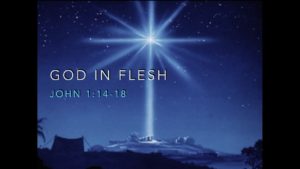January 6
The Lord be with you
 With the festival of the Epiphany of Our Lord, Christmas is officially over. Epiphany commemorates no specific event but presents an idea that assumes concrete form only through the facts of our Lord’s life. The idea of Epiphany is that the Christ who was born in Bethlehem is recognized by the world as God. At Christmas, God appears as man, and at Epiphany, this man appears before the world as God. That Jesus was a man needed no proof. But that this man, this helpless child, is God needed proof. The manifestations of the Trinity, the signs and wonders performed by this man, and all His miracles have the purpose of providing to men that Jesus is God. Lately, especially in the Western Church, the story of the Magi has been associated with this feast day. As Gentiles who were brought to faith in Jesus Christ, the Magi represent all believers from the Gentile world. The word “epiphany” comes from the Greek and means “manifest.” That Jesus is the Christ, the Son of God, God in the Flesh, is made manifest. Other lessons associated with this season include the Baptism of our Lord, Christ changing water into wine at the wedding in Cana, and the Transfiguration.
With the festival of the Epiphany of Our Lord, Christmas is officially over. Epiphany commemorates no specific event but presents an idea that assumes concrete form only through the facts of our Lord’s life. The idea of Epiphany is that the Christ who was born in Bethlehem is recognized by the world as God. At Christmas, God appears as man, and at Epiphany, this man appears before the world as God. That Jesus was a man needed no proof. But that this man, this helpless child, is God needed proof. The manifestations of the Trinity, the signs and wonders performed by this man, and all His miracles have the purpose of providing to men that Jesus is God. Lately, especially in the Western Church, the story of the Magi has been associated with this feast day. As Gentiles who were brought to faith in Jesus Christ, the Magi represent all believers from the Gentile world. The word “epiphany” comes from the Greek and means “manifest.” That Jesus is the Christ, the Son of God, God in the Flesh, is made manifest. Other lessons associated with this season include the Baptism of our Lord, Christ changing water into wine at the wedding in Cana, and the Transfiguration.
A little Epiphany Trivia …
The first two festivals the Early Church recognized and celebrated each year were Easter and Pentecost. These took root in the first century. The first reference we have to Epiphany comes from second century Egypt, making it the third-oldest annual celebration of the Christian Church.
One of the themes associated with this day is the visit of the Magi to the Christ Child. This story is recorded only in Matthew. The Excerpta et Collecteana, associated with the Venerable Bede (672/673—735), gives the number of the Magi as three and supplies their names as well as a fanciful description of each and a symbolic interpretation of the gifts they brought.
The Magi were the ones who gave gifts to the Lord. The first is said to have been Melchoir, an old man with white hair and a long beard … who offered gold to the Lord as king. The second, named Gaspar [or Caspar or Kaspar], young and beardless and ruddy-complexioned … honored him as God by his gift of incense, an offering worthy of divinity. The third, black-skinned and heavily bearded, called Balthasar … by his gift of myrrh testified to the Son of Man who was to die.
Down to this very day Bede’s description has influenced the portrayal of the Magi.
Because Matthew’s account of this visit mentions that the Magi “entered the house” where the Holy Family were living, the tradition of blessing homes on Epiphany arose. As a sign of the blessing, three initials representing the traditional names of the Magi (K for Kaspar, M for Melchoir, and B for Balthasar) were marked with chalk over the doors of the blessed house. Each initial was preceded by a cross (+) signifying “holy” or “saint.” The year the home was blessed was divided in half and placed on each side of the initials. So a home blessed this year would have marked in chalk above the door: 20 + K + M + B 17. The letters also became associated with the Latin Christus mansionem benedicat (Christ bless this house).
Blessings in Christ,
Pastor John Rickert
